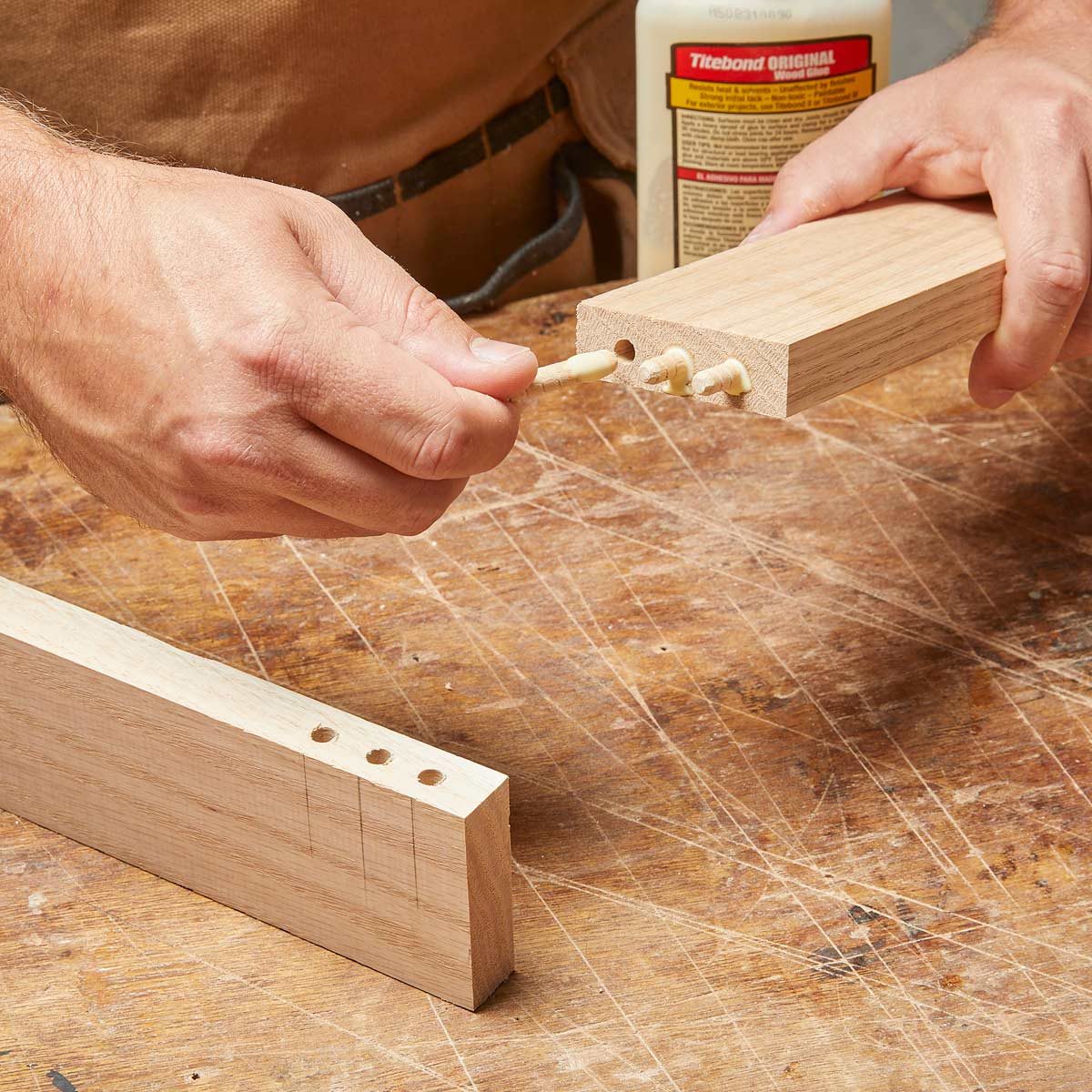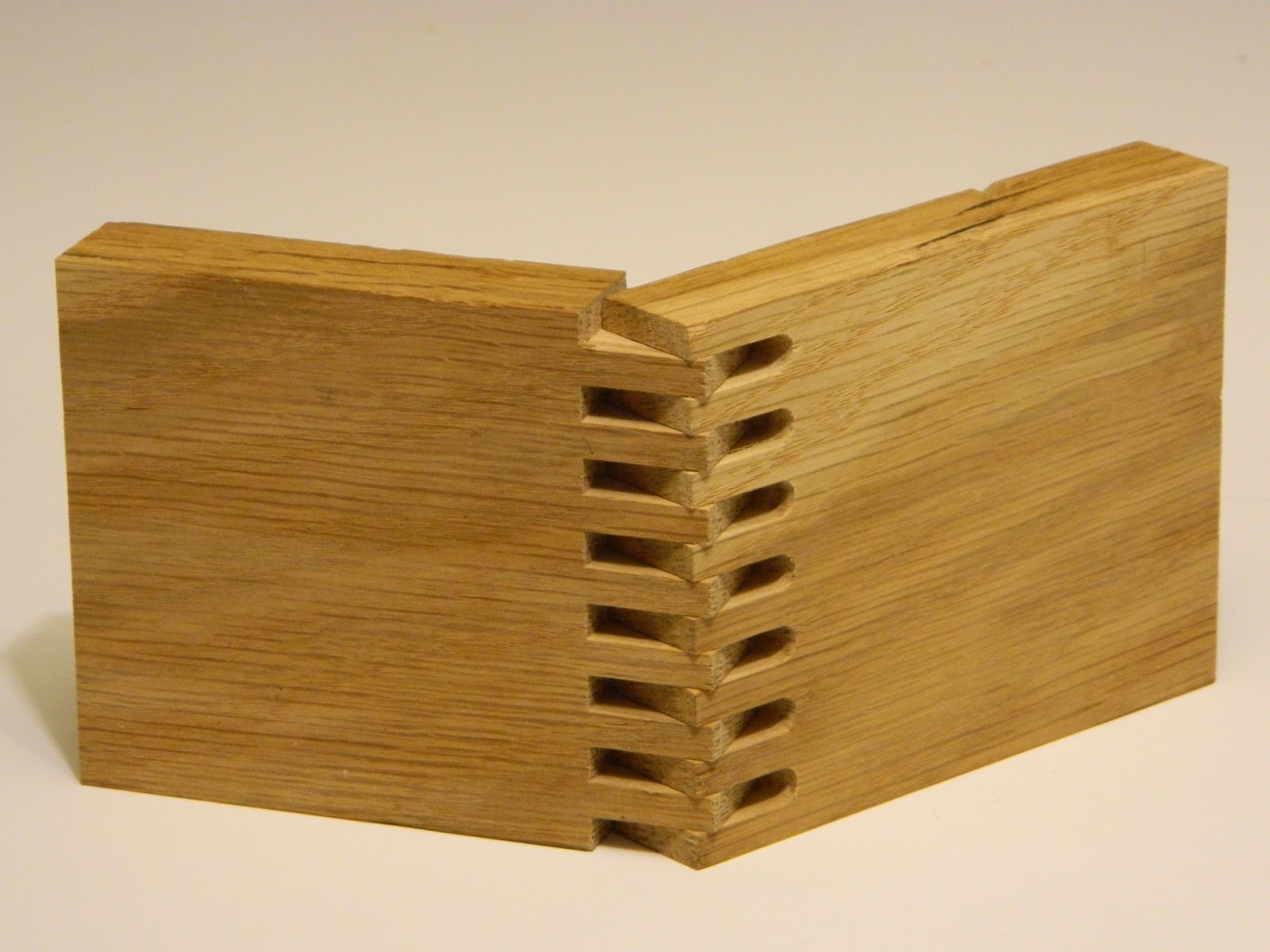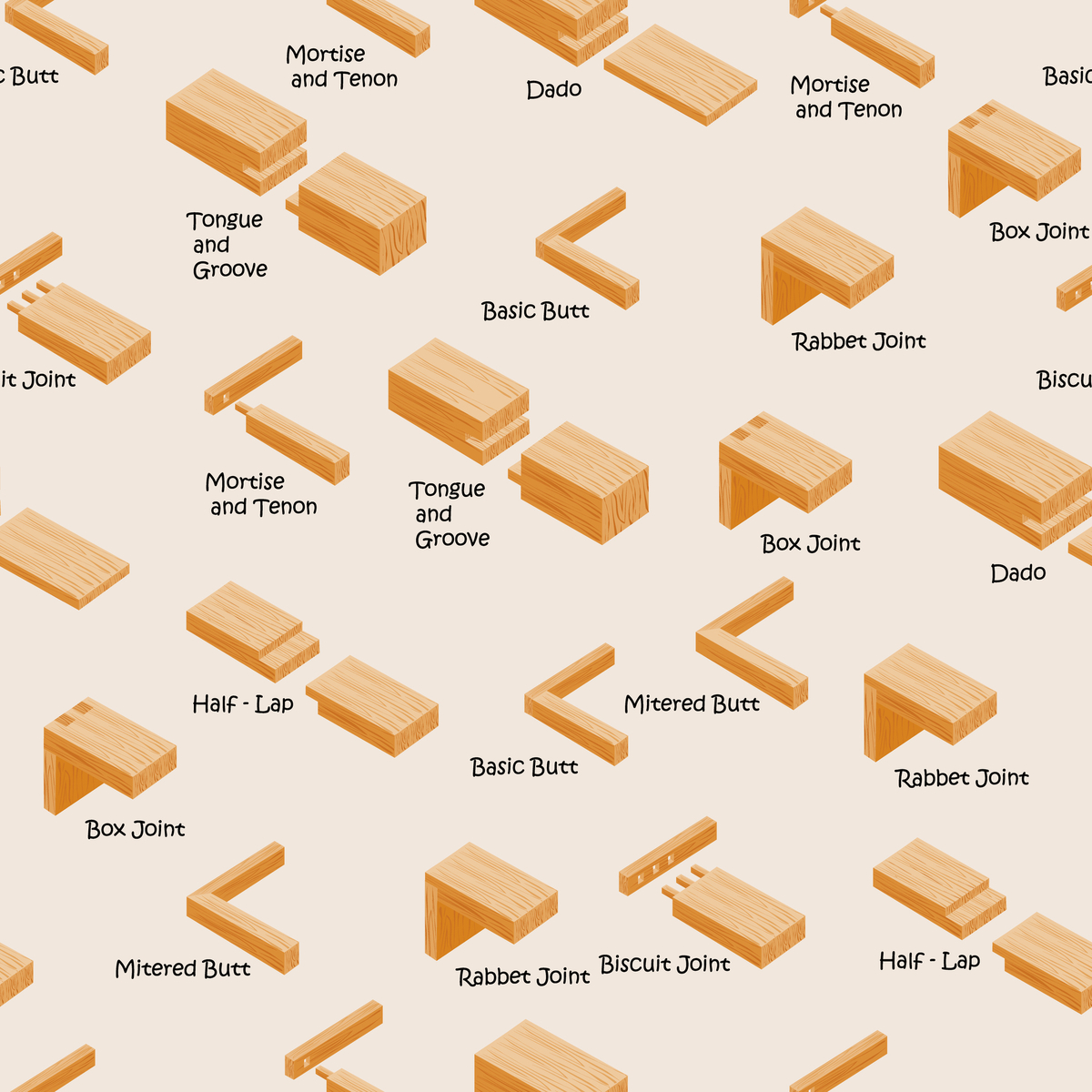
Wood Joints 4 Types of Joinery Options to Use Family Handyman
Creates a tight and interlocking joint for panels and flooring. Provides excellent stability and prevents warping or movement. The end grain is hidden, and the result is aesthetically attractive.. The butt joint is the simplest but weakest of the typical wood joints. The butt joint, in contrast to joints that are held together by.

Frame And Panel Finesse Carpentry and joinery, Wood joinery detail, Joinery design
A tongue-and-groove joint is a popular option in flooring and wood paneling: this joinery is one of the most self-explanatory wood joints. On the edge of one board is a tongue, on the other, a corresponding groove. When placed together, the boards lock tightly to one another. Pocket Joint.

Finger joints Wood joinery, Woodworking, Wood
Wood joints are more commonly used to secure picture frames, furniture, and wood flooring, among others. But, different woodworking projects require specific types.. Making solid panels of wood; Joining wider slates #15: Dowel Joint . Dowel joints are known to be very strong and attractive joints. It is a common joint used in factory-made.

Table with 45 degree corner groove Woodworking joints, Woodworking joinery, Diy woodworking
Then adjust the depth of the cut to be exactly half the thickness of the stock. This cut needs to be dead-on, so use the extra stock you surfaced to test it. Once you have that right, simply rout the tiny rabbets into the edge of your stock. For the pieces of wood in the center of the panel, rout the rabbets on the opposite faces of the wood.

Quiet CornerWood Joinery Mortise and Tenon Joint Quiet Corner
Uses: This type of wood joint is often used in furniture making and crafts. Your table legs are most probably joined by a stopped mortise and tenon joint and the chair legs are often attached with the help of angle mortise. 9. Rabbet Joint. Woodworkers form this joint by forming a recess into the edge of the timber.

The Ultimate Wood Joint Visual Reference Guide — MICHAEL TOBIN PRINCE
203 - Invisible Panel Joints. Whenever I glue multiple boards together, my ultimate goal is to hide the fact that it is indeed a glueup. If I can make it appear as if the panel was cut from one super wide board, I'm a very happy boy. The first step in achieving this lofty goal is to make sure the edges are milled properly.

4D Furniture Thoughts Creative CNC Joinery, and Other CNCCut Solutions.
Japanese Wood Joints. Japanese wood joints, also known as Kumiko, build traditional Japanese houses. In this technology, the grooved wood pieces are joined together to create a sturdy tree dimensional structure.. Paneling: Tongue and groove paneling can create a traditional, rustic, or modern look in a room. Cabinets: Used in cabinet.

Woodworking Joints, Learn Woodworking, Woodworking Techniques, Woodworking Plans, Woodworking
3. Coped joint. A coped joint is a variation on the miter joint that lays underneath the miter joint. It addresses the reality that the corners of many rooms do not in fact meet at 90-degree angles. Beneath the exterior (visible) miter joint, the two pieces of wood that make up a coped joint are carved like puzzle pieces to form an irregular but custom fit.

Digital Fabrication for Designers CNC Cut Wood Joinery
Position a doweling jig over the marks, and drill holes 1 ⁄ 16 " deeper than half the dowel length. On one piece, spread glue within the holes, insert the dowels, and clamp it to a flat surface. On the other piece, glue the end grain and holes, force the pieces together, and clamp until dry.

Woodworking Different Types Joints ofwoodworking
Level of Complexity: BEGINNER. Another simple technique is using dowels to strengthen butt joints. Wooden dowels have reinforced furniture joints for many years and are used to help maintain alignment during glue-ups as well. A dowel can also replace stripped fasteners to remove play in butt and miter joints.
/wood-joinery-types-3536631-v3-5b9827b84cedfd002536486c.png)
Woodworking joints names
A pocket joint might be one of the more familiar, even for the novice woodworker. To make a pocket joint, you drill an angled hole into one piece of wood and join it to another piece with a self-drilling washer head screw. It's a fast and easy way to join two pieces without the need for clamping them together. The key is the angled hole.

Basic Wood Joinery YouTube
Drilling with the two inside guides spaces holes 1 1/4" apart. A 1/16" countersink keeps the hole edges from swelling and pushing the joint apart. Then glue and insert dowels into either the stiles or rails. Glue the exposed dowels and joint surfaces, tap the parts together, and clamp the joints for one hour.

Pin on Joinery Detail
A finger joint, also known as a comb joint, is a common type of structural joint that connects two pieces of wood together. They are used in a variety of projects, from furniture to home decor, but are most often used to create large wood panels that are stable and robust. We have solid oak worktops in our kitchen which have been manufactured.

Types Of Wood Joints And Their Unique Purposes
Box joints have parallel cuts and open visible joints. An alternative to the dovetail joint, they are used for box corners or box-like constructions. One advantage of using a box joint is that it is easy to make and can be easily mass-produced. This type of wood joint is suitable for joining wide slats, boards, and solid wood panels. #14.

Wood Joints And Their Uses Image to u
It is usually used when a connection needs to be made in the middle of the wood. Half-lap joints are often used in both manufacturing furniture and framing. Fig 3:Half-Lap Joint. 4. Tongue and Groove Joint. The tongue and groove joint is another famous woodworking joint used in wood flooring, parquetry, paneling, etc.

Joining wood panels Woodworking joints, Wood diy, Woodworking
The four best methods for joining wood together are pocket screws, dowels, biscuit joints and the Beadlock system. Just because there are four methods doesn't mean you have to master all of them to be a good woodworker. Give each of them a try, pick one or two methods you like the most, and then practice those methods until you've got them.